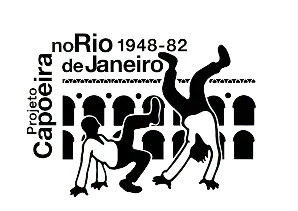By Luiz Augusto Pinheiro Leal and Fabio Araújo Fernandes.
The history of capoeira has for a long time been marred with myths. The most dangerous, in the academic field, asserts the non-existence of documents that might aid in the study of its practice in the past. It is still repeated today that Rui Barbosa burned all the documents relating to the shameful practice of slavery in Brazil. As capoeira is associated more with slavery than with black resistance, it would therefore be impossible to know its past. This myth has been shattered thanks to intensive research by historians since the late 1990s. If capoeira was initially still associated with slavery, as seen in Soares (1998), historians more recently have been able to show that capoeira did not disappear with the Abolition of slavery (1888). As noted in Leal (2008), even after the practice was criminalized in 1890, capoeira continued to exist in various parts of Brazil, including in Pará.
The history of capoeira is divided into two periods, generally treated as distinct. The first, between the 19th century and the first decades of the 20th century, was when the practice was known as “capoeiragem” (capoeiragem) and was criminalized by the Republic’s first penal code, in 1890. In the second period, studies on capoeira highlighted Bahia as a centre for the revitalization of capoeira (it would no longer be capoeiragem).
Capoeira in Pará
In the northern state of Pará, in the Amazon region, the violence of the Brazilian State was so intense that the existence of a native capoeira disappeared from the collective memory and even from that of the capoeiras. Some of the mestres, who arrived in the 1970s, presented themselves as the ones who brought capoeira to the North of Brazil. Historical capoeiragem and Bahian-inspired capoeira met in the 1970s, with the arrival of masters from Maranhão (Mestre Bezerra), Rio de Janeiro (Mestre Romão) and the reaffirmation of the identity of one of the last old capoeiras from Pará (Mestre Mundico).
In the absence of any research or collective memory, oral tradition, so important to the dissemination and development of capoeira, was used to disseminate a variety of details on the history of capoeira in Pará. Since the capoeira master is responsible for “living tradition,” that is, for the performative updating of the knowledge he possesses and of his own experience, the versions about capoeira’s past were restricted to only the moment lived by the storyteller. However, it was precisely this moment, known in the memory of the masters as the “hippie era,” that defined the re-invention of capoeira in Pará.
Mestre Mundico, Mestre Romão and Mestre Bezerra, each with their own experiences, built different versions for capoeira in Pará. These versions, based on territorial delimitation, were the first guidelines for the restructuring of capoeira in Pará. Capoeira in Pará, in the voice of the mestres, can be interpreted in its multiple cultural and historical perceptions.
The article we are summarising here deals with the encounter and the reorganisation of capoeira in Pará, in dialogue with other national experiences. Our approach is based on the relationship between history and memory. We engage with the personal memories of three mestres as a reflection of collective memory.
The "hippie era"
The “hippie era” corresponds to a temporal cut-off, present in the oral history narratives of the capoeiras in Pará. This expression, used by some older capoeira mestres, refers to a period when a historical capoeira, peculiar to Pará, met with that of other Brazilian regional matrices of the art. The hippies were people connected to the North American counterculture movement, born in the 1960s. In the 70’s, sympathizers of the hippie scene were present in Belém, in places like Praça da República.








